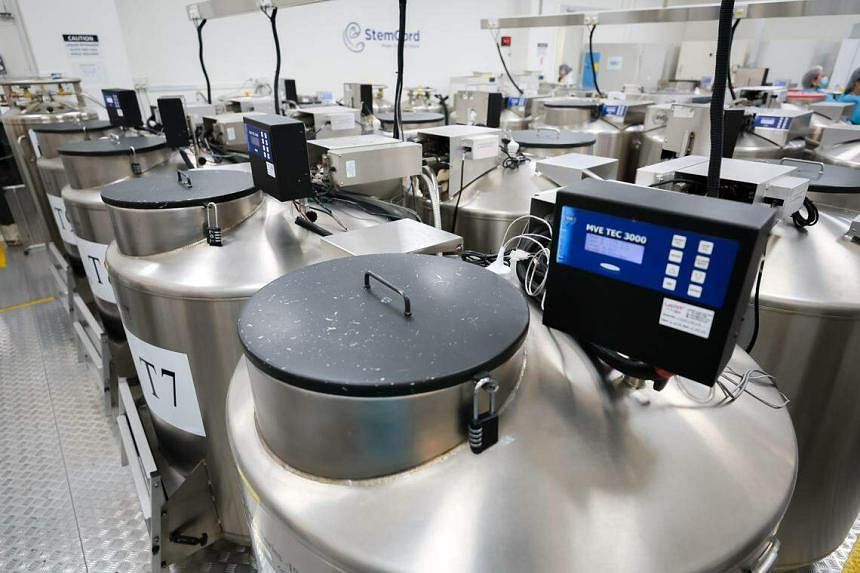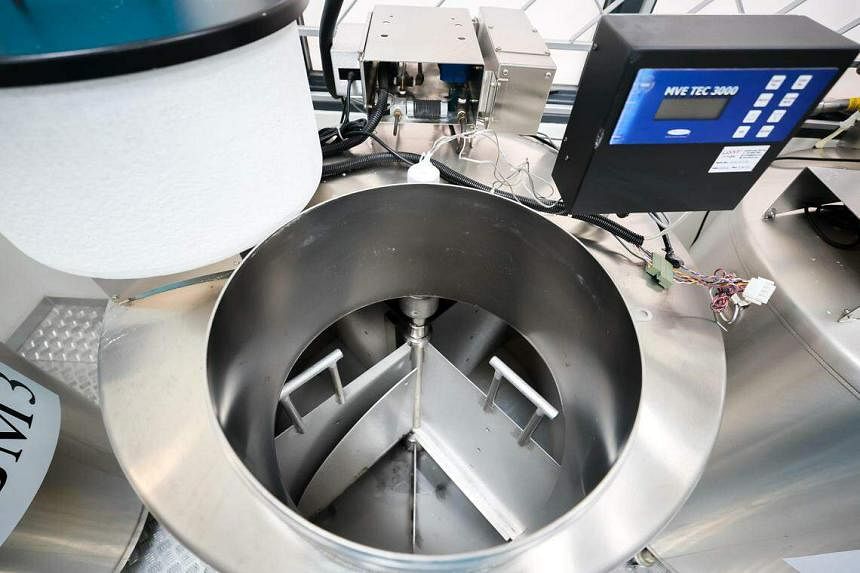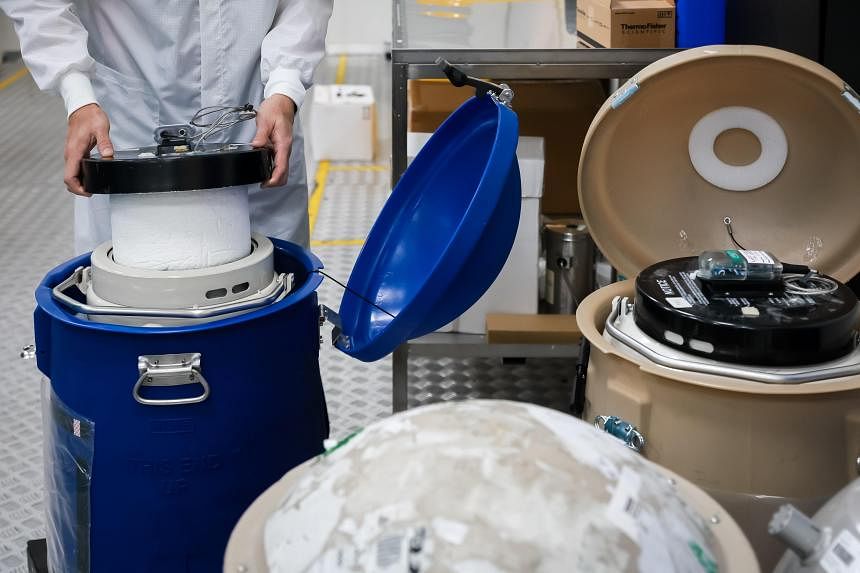SINGAPORE – Storage lapses at private cord blood bank Cordlife have raised questions about how potentially life-saving cord blood needs to be stored and what should be done to keep it safe.
The Straits Times spoke to other private and public cord blood banks in Singapore and was given an exclusive tour of one bank’s premises.
ST also finds out whether it is feasible to transfer cord blood units between banks and the differences between private and public cord blood banking.
Q: What is cord blood and what can it do?
A: It is blood harvested from the umbilical cord after a baby is born, and is a rich source of haematopoietic stem cells, which can develop into all types of blood cells.
When cord blood is given to someone in need of a life-saving treatment, the stem cells can develop into the type of blood cell that the patient needs. This could be red blood cells, white blood cells or platelets.
Cord blood transplants have been shown to cure patients with a variety of conditions, such as blood cancers, bone marrow failure, immunodeficiencies, metabolic disorders and blood disorders like sickle cell anaemia or thalassaemia.
Q: How and where is cord blood stored?
A: After cord blood is collected, it is sent to a laboratory to be processed. Following that, the cord blood units are kept for decades in cryogenic conditions of at least minus 150 deg C in vacuum-insulated tanks with liquid nitrogen.
Parents here have the option of storing cord blood with either the Republic’s only public bank, Singapore Cord Blood Bank (SCBB), or with private cord blood banks Cordlife, Cryoviva or StemCord.
Cord blood that is donated to a public cord blood bank is not reserved for the donor’s family. Instead, it is made available to any patient in need of matching cord blood for haematopoietic stem cell transplantation.
Cord blood donations are voluntary, confidential and at no cost to the donor.
If kept in a private bank, the cord blood is kept exclusively for the child or the child’s family at a fee.
Q: Public v private: Which is better?
A: There are currently few treatments that use autologous cord blood – using the patient’s own blood stem cells for his treatment. This is because the cord blood may carry the genetic defect that caused a disease in the first place.
According to a 2016 article by media outlet Today, experts in Singapore estimated that the chance of families retrieving their privately banked cord blood for treatment is between one in 2,500 and one in 20,000.
In contrast, cord blood stored in the public bank has a 2.2 per cent chance of being used.
The American Academy of Pediatrics (AAP) said in a policy statement in 2017 that public cord blood banking is the preferred method in transplantation in infants and children with deadly diseases.
There is a limited role for private cord blood banking, said AAP, though it is useful for families whose members have known malignancies or congenital diseases, such as children with severe primary immunodeficiencies and haemoglobinopathies, which are disorders inducing an abnormal production of haemoglobin.
Q: Can cord blood units be transferred from one bank to another?
A: There was a public outcry following revelations of storage lapses at Cordlife, with its customers inquiring about transferring their cord blood units to another bank.
SCBB said it received close to 10 queries after the news broke, while StemCord and Cryoviva said they got multiple requests, without sharing more details.
In a Facebook post in December, Health Minister Ong Ye Kung advised parents to hold off on such requests until the full impact of the breach is known, in part due to the logistical complexity of such an exercise.
All the banks said they were awaiting further guidance from the Ministry of Health as Cordlife investigations are ongoing.
Cord blood banks usually transfer units to medical facilities when the blood is released for treatment purposes. This is done in a cryogenic container called a dry shipper.

According to international accreditation standards, cord blood units need to be transported in nitrogen-cooled dry shippers that can maintain temperatures of minus 150 deg C or colder.
Such temperatures need to be maintained for at least 48 hours beyond the expected time of arrival at a receiving facility.
The dry shipper should also contain an electronic data logger that continuously monitors temperatures throughout the transportation period.
According to terms stated in customer contracts with Cordlife that ST has seen, it will cost parents $1,000 before GST to transfer their cord blood units to another bank.
Q: What other considerations have to be taken into account when transferring cord blood?
A: StemCord chief executive Valerie Wong said the company was studying the feasibility of receiving cord blood units from Cordlife, as storage methodologies could differ between companies.
StemCord splits a cord blood unit into two bags and stores them at two different locations.
“The storage bags, the racks (for holding the bags), the sizes are all different. We need to know if the cord blood bags fit into our storage tanks before we can accept transfers... Our medical directors also need to assess if the cord blood is in a good condition before we accept it for storage,” said Ms Wong.

There are also legal issues to sort out between cord blood banks.
Mr Alvin Lim, special counsel at Withers KhattarWong, said the banks involved would have to agree on issues of liability.
“At which point is liability transferred? Who is responsible for transporting the blood? Who is responsible for any mishandling along the journey or process? There are at least several possibilities: Responsibility shifts upon collection, transport, reaching the new storage facilities and safe storage,” said Mr Lim.
Mr Kelvin Ong, managing partner of Contigo Law, said that given there may not be full visibility over how cord blood units were previously processed and stored, and whether the units are viable at the point of transfer, it may be difficult to apportion blame if the units are not viable eventually.
“If cord blood units are found to be compromised post-transfer, there may arise the issue of which of the transferor or transferee pays damages, and if so, how much?” said Mr Ong.


